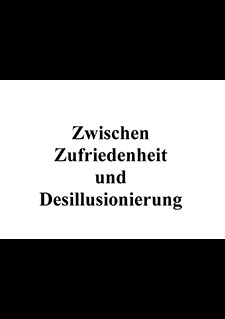Between Contentment and Disillusionment
From 1935 to 1939, the majority of German Protestantism was content with the political circumstances in the Nazi state. All of the factions in the Protestant church, from the German Christians to the ecclesio-politically neutral “center” and even the Confessing Church, which had been at loggerheads since the “church struggle” of 1933-34, shared this contentment.
It was fed by the perceptible improvement of the economic situation, the seemingly orderly domestic political situation following the clashes in the Weimar Republic and the Nazi regime’s foreign policy “successes”. This contentment was expressed in numerous statements and messages of greetings to Hitler from the church, especially on such occasions as the restoration of the Saar Region 1935 and the “Anschluss” of Austria in 1938.
Wherever the Nazi regime’s criminal character became perfectly clear however, especially during the Nuremberg Laws in 1935 and the November Pogrom in 1938, the Protestant church fell silent virtually without exception. Traditional Protestant loyalty to the state, Christian anti-Judaism, fear of one’s own persecution and a lack of awareness of the church’s responsibility even for people who themselves were not its members blended together.
The depth of anti-Judaism and the deep-rootedness of anti-Semitism in German Protestantism were manifested in 1939, for instance, in the Godesberg Declaration and the establishment of the “Institute for Research into and Elimination of Jewish Influence in German Church Life” in Eisenach.
German Protestantism’s stance toward the Nazi state’s policy toward churches and religion proved to be far more complex than the assessment of the political circumstances. After the attempt with the aid of the German Christians to coordinate the Protestant church, organized in regional churches, as a German Evangelical Church failed in 1934, the state intervened directly in church affairs.
1935 brought radical changes: Finance departments were introduced among the ecclesiastical authorities and a Reich Ministry of Church Affairs was formed, which received sweeping legislative powers over the church. The majority of church officials were initially willing to work together with the Nazi’s new Reich Minister of Church Affairs Hanns Kerrl.
Church leaders did not immediately oppose the state’s intervention because of the Protestant church’s desolate situation, Protestant notions of authority and the minister’s apparent trustworthiness.
When Kerrl however soon dismantled the church committees he himself had appointed to “bring peace” to the church and intervened in church affairs more and more rigidly, a process of disillusionment set in, primarily in the moderate Confessing Church and among parts of the neutral “center”. This was also contributed to by the exclusion of the church from public life pursued under the catchword “de-confessionalization” and the party’s anti-Christian propaganda, which became perceptible to every ecclesio-political faction.
As of 1937, only elements of the neutral “center” were still willing to work together with Reich Minister of Church Affairs Kerrl. Representatives of the “center” continued to believe they were able to bring about a reorganization of the Protestant church in cooperation with Kerrl, even though he had long since lost Hitler’s support after the failure of his policy toward the church committees and was no longer able to assert his authority over the forces in the state and party that were hostile to the church and Christianity.

